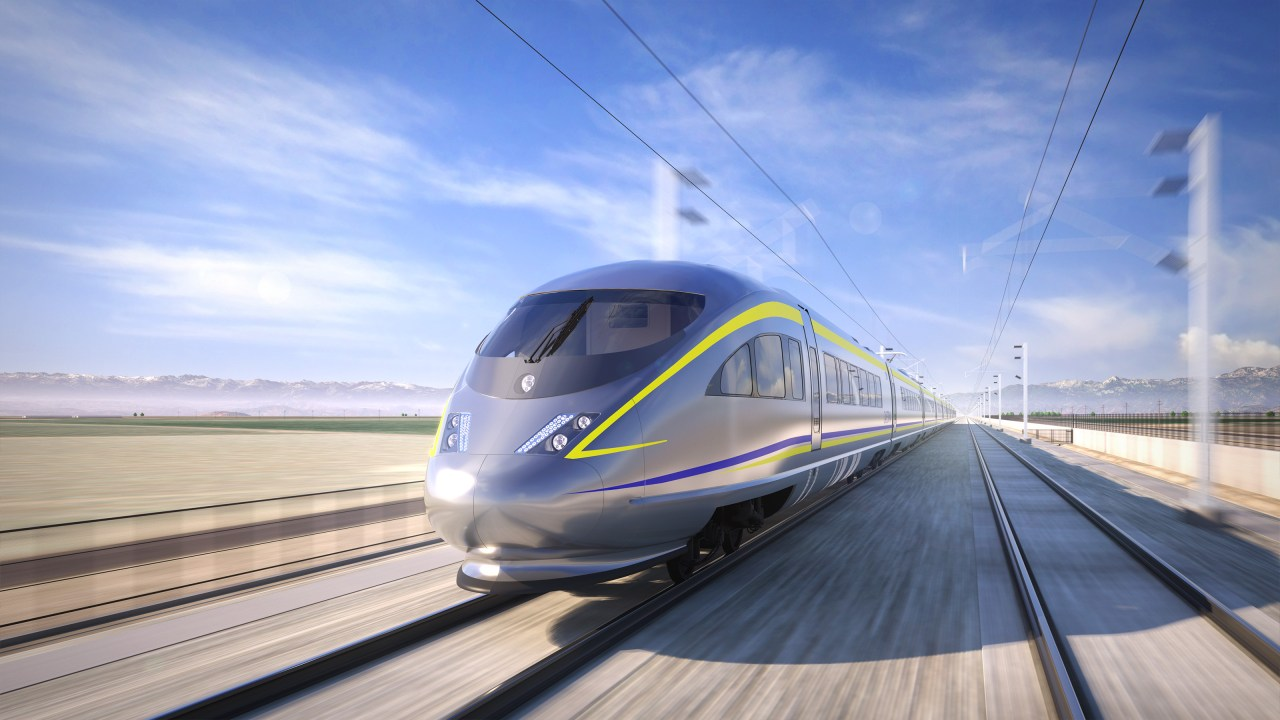- cross-posted to:
- trains@lemmy.ml
- technology@lemmit.online
- cross-posted to:
- trains@lemmy.ml
- technology@lemmit.online
California takes first step in acquiring trains for High-Speed Rail::The California High-Speed Rail took another important step toward becoming reality Thursday after the governing body’s board of directors began the process of obtaining possible vendors for the state’s most ambitious transit project in history.
For the lazy:
The California High-Speed Rail took another important step toward becoming reality Thursday after the governing body’s board of directors began the process of obtaining possible vendors for the state’s most ambitious transit project in history.
The High-Speed Rail Authority’s Board approved the release of a Request for Qualifications, which clears the way for the Authority to obtain and screen vendors as well as establish a pool of possible manufacturers for the project’s trainsets.
Interested companies will need to submit a statement of qualification to the Authority to attest they can meet the demands of the project if ultimately selected as the winning bid.
Statements of Qualification will be due by November and the total pool of vendors will be whittled down by the first quarter of 2024, the Authority said.
“Our action today allows us to deliver on our commitment to meet our federal grant timelines to start testing,” said Board Chair Tom Richards. “This is an important milestone for us to deliver high-speed rail service in the Central Valley and eventually into Northern and Southern California.”
The Authority is looking to obtain six trainsets that are capable of operating at speeds of 220 mph and tested at speeds as high as 242 mph. Two prototypes will need to be delivered by 2028 to allow for testing and trial runs and the additional four will need to be delivered by 2030.
“These trainsets ensure that we are procuring the latest generation of high-speed trains for this first-in-the-nation project,” said Authority CEO Brian Kelly. “We look forward to working with members of the industry as we strive to develop a market for high-speed trains in the United States.”
The manufacturer who is chosen to receive the High-Speed Rail contract will be be responsible for designing, building, integrating and commissioning the trainsets, as well as maintaining them and their spare parts for 30 years. The manufacturer will also be responsible for testing and maintaining a driving simulator.
The California High-Speed Rail is tentatively planned to open in 2030, operating in the large middle section of the Central Valley which and connecting Merced to Bakersfield along a 171-mile track.
Construction on the project officially began in Fresno in 2015 after decades of discussion and voter approval for initial funding in 2008.
The Authority said it hopes to have service going by 2030, but transportation advocates and supporters of the project have urged the governing body to accelerate that timeline, possibly having the entire track from the Bay Area to Los Angeles up and running by 2028.
Despite clamoring from advocates and overall enthusiasm for the project, the Authority stresses that there’s simply not enough funding to get the project completed any sooner.
Still, Thursday’s procedural step is an important one and continues to solidify the Authority’s confidence that the project is past the “point of no return” and will be completed in the next decade.
Construction is currently underway along 119 miles of the proposed 171-mile track across the Central Valley. There are more than 30 active construction sites in the state, and the 422 miles of the program’s design has received environmental clearance.
*Michael Buble meme with Elon’s head “Here comes the Hyperloop again”
Did they put in requirements like needing the trains to be US built? Or are we just going to end up enriching the Chinese (or elsewhere) with these purchases? Seeing as how these are for CA, they should require 75%+ US-built trains with maybe 25 to 50% of that being built in the state itself.
It isn’t just about improving our rail system. It is also about building a home-grown train industry that employs Americans with good paying jobs. These programs have to look at the big picture. This is how you build a home-grown industry that then can supply trains to other parts of the country as well. If you start employing thousands of Americans in this industry, you will then get a voting bloc that looks to further high speed train penetration into other markets as well.
This is kind of how coalminers are right now - it is a shitty fuel, but you have thousands of coalminers who will vote for politicians who further coal adoption. They become a strong political group in their region and with that, it helps keep coal alive even if we need to stop using it. Those politicians want to keep those votes, and those workers want to keep their jobs, even if it destroys our environment. Well think about if a large percent of those coalminers were given jobs building trains. They would be a political force to further the high speed train agenda in our country.
While I agree in principle, the project is already significantly delayed, over budget and under funded. Adding a requirement to bootstrap a high speed train industry in the u.s. would doom the project which is already on Shakey ground.
We don’t want this to turn into an unfinished boondoggle that every oil backed think tank can point to and say HSR won’t work in the u.s.
You have it backwards.
Adding a US-made requirement would help the program move forward. Every politician loves to claim that he created X number of US jobs. He can then go and visit the factor and mingle with the factory workers and get their vote.
Fuck that. Requiring trains to be built in the US will blow up the already obscene budget even more and lead to poor-quality trains due to a lack of experience in high speed trainset manufacturing.
We saw this in Boston, where the requirement of US-made led to absolutely fucked supply chains, constant delays and cost overruns, and shoddily constructed trains with a multitude of problems (though, admittedly, the entire Boston transit system has these problems anyway so I guess it’s just another part of government dysfunction). For what? For a voting bloc of like a thousand temporary workers?
Thing is, the US doesn’t really have high speed rail in the pipeline that can share technical expertise. The proposed Texas line is planning to use Shinkansen trains, Brightline already has a supplier, and so does Amtrak. Where are you going to get economies of scale to come into play?
It’s also a fucking California state project, and California is the safest blue state that ever blued.
No other type of job creates more secondary jobs like manufacturing. Manufacturing is what created the American middle class with good paying jobs and gave millions upward mobility. Both are things that have been in jeopardy in this country for decades now. The whole goddamn point of growing a domestic high speed rail system is that would incentive future growth in fail travel, create good paying jobs and keep us from being endlessly dependent on foreign know-how.
I agree. If we don’t have the capability right now, then let’s create it. I can wait to see the project completed if the end result is long-term domestic prosperity in the working classes.
This is the type of thinking we’ve been neglecting in America, and look at the current state things… We need long-term thinking to replace short-term solutions.
Except that everyone wants instant gratification. Short term fixes that don’t solve long term problems. This is fast-food solutions… like empty calories that don’t fill you up, you’re left wanting seconds after you finish.
In an ideal world, yes, we should build our own trains, but personally I think that’s putting the cart before the horse. Let’s get at least one portion of the track laid and functional before we start imposing more requirements. We can’t support an American train building industry without tracks to put those trains. Any investment in infrastructure increases the likelihood that others build on that infrastructure.
tHiS CoNtEnT Is nOt aVaIlAbLe iN YoUr cOuNtRy/rEgIoN
Is this open to like the French TGVs and other non USA competitors?






